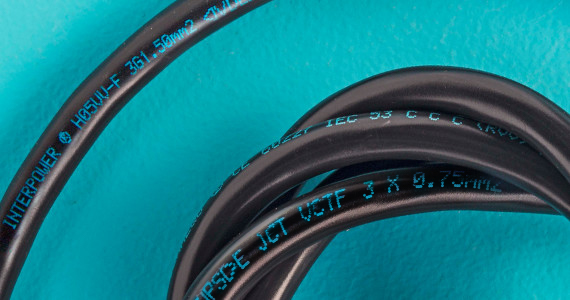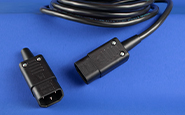Selecting the Correct Cable

When designing an electrical/electronic product that will be for sale in any part of the world, deciding on the type of cable is an important step in that process. To assist in selecting the correct cable, please consider the following questions.
Where is the End Destination for the Cable?
The market that the product will be sold in, such as North America, Europe, Asia, or South America, will determine the type of cable and approvals that are needed. For example, if the product is to be sold in the United States, then North American approved cable needs to be used. If it is in Germany, then it will need to be international approved cable. If the country is China, the selection will need to be Chinese approved cable.
What is the Application?
There are two factors to consider when determining the correct type of cable: how the product will be used and the environment it will be used in. The application will determine the outer jacket material recommended for the cable. For example, a household appliance that will be used indoors will likely have a different kind of cable than a hand tool meant to be used at an outdoor construction site.
Possible Materials for Cable Include:
Thermoplastic
Thermoplastic can be softened through heating and hardened through cooling. It can be molded when heated and can retain its shape after it cools. Thermoplastic is the opposite of thermoset.
PVC
PVC is a common thermoplastic material for cable and conductor jackets and some molded plugs.
Thermoset
Thermoset uses a heating process called curing and once the plastic is cured, it cannot be changed but keeps its shape.
Rubber
Rubber is also a common material for cable. It is a thermoset-type material. While it may be more costly than thermoplastic cable, it tends to be more durable with high levels of water and abrasion resistance. Rubber is a good choice for outdoor applications.
Thermoplastic Elastomer
TPE is a material that has characteristics of rubber, as well as thermoplastic.
For indoor use, jacket material typically is PVC. For outdoor and/or industrial use, the jacket material may be rubber, TPE, or PVC. For outdoor use, it’s also important to determine what specific conditions the cable needs to be protected from, such as abrasion, water, oil, and/or sunlight.
What are the Power Needs?
The end destination for the product determines what the power needs will be. Different countries/regions have different amperage and voltage requirements. Knowing those requirements at the beginning of the design process is crucial. These factors will affect the size and type of the cable needed to supply safe electrical power.
For example, in North America, circuit voltage is usually 120V or 240V, using 15A for non-industrial needs. For industrial needs, typical requirements would be 120V, 120/208V or 120/240V using 20A or less. In the European market, non-industrial needs are usually 230V using 16A or less, whereas the industrial needs could be 230 or 400V using 32A or less.
North American and international cable standards dictate the ratings for different designated sizes. Because of the difference in ratings guidelines between the different standards, North American cable ratings do not necessarily match up with international cable rating standards.
What Temperature Will the Cable Be Subjected To?
Typical indoor room temperatures may range from 20°C to 30°C (68°F to 86°F). Properly operating equipment may generate an additional 30°C (86°F), so cable for indoor applications is typically rated for at least 60°C (140°F). If the product is a heating appliance, consider using a rubber jacketed cable or a special heater type cable.
Outdoor/industrial ambient temperatures and equipment usually have higher extremes and therefore the cable may need to be rated from -50°C up to 105°C (-58°F up to 221°F).
How Will the Cable Be Connected?
All electrical equipment needs some way of receiving power and the cable completes the electrical circuit from the power source to the equipment. It may be with a connector/inlet combination (detachable) or it may be hardwired with a strain relief/cable gland (non-detachable).
Additional Resources
The key to selecting the correct cable starts with knowing the end destination, the application, and the power supply requirements. Customer Service Representatives at Interpower are available to assist with questions to help determine which cable type is best for a specific electrical/electronic product.
For more information on the complete line of North American and international cable offered by Interpower, including cable manufactured by Interpower, see North American and International Cable. See also the Featured Product pages on North American Cable and Interpower International Cable.
Interpower offers free technical support. For further assistance, please see Interpower’s contact information below.






